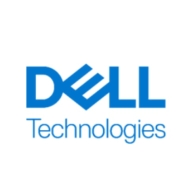

Dell XC Appliance and Azure Stack HCI are key players in the hyper-converged infrastructure market, addressing varied organizational demands. Data highlights that while Dell XC Appliance is a budget-friendly choice with strong support, Azure Stack HCI excels with sophisticated features, offering an inspiring option despite higher expenses.
Features: Dell XC Appliance integrates smoothly with existing systems, supports flexible scaling, and offers simplified management. Azure Stack HCI impresses with strong cloud connectivity, high availability, and comprehensive backup options.
Room for Improvement: Dell XC Appliance could enhance its cloud integration and provide more advanced analytics and customization options. Azure Stack HCI might benefit from streamlining its deployment process and reducing complexity while increasing scalability.
Ease of Deployment and Customer Service: Dell XC Appliance offers easy installation and quick setup, backed by excellent customer service. Azure Stack HCI, with its complex deployment process, is supported by Microsoft's robust support network, ensuring reliable assistance and resources.
Pricing and ROI: Dell XC Appliance offers competitive pricing, providing a solid ROI by lowering operational expenses. Azure Stack HCI, although requiring a higher initial investment, offers substantial returns through its advanced features and scalability.

Azure Stack HCI efficiently integrates software-defined networking and Azure Kubernetes Service, offering a streamlined hybrid setup for VM management while maintaining top performance.
Azure Stack HCI enhances data center operations with high-end processors and storage, optimal Kubernetes support, and integration with Azure Arc and Azure Site Recovery. High application density in four-node configurations improves both time and infrastructure efficiency. Despite its strengths, the platform can improve in areas like software-defined networking, operational management, and simplifying deployments, which currently rely on PowerShell. Users often desire better training and integration with Microsoft Azure Portal, along with multi-cluster capabilities and storage architecture enhancements. Improvements in Hyper V virtualization are also needed to match competitors like VMware.
What are the key features of Azure Stack HCI?In sectors like government, Azure Stack HCI is crucial for running secure on-premise services with selectable Azure features to ensure data privacy. Businesses leverage the platform for VM creation, management, and monitoring through Windows Center, alongside Kubernetes production environments. Connectivity with Azure allows for smoother cloud transitions, appreciated for its dashboard manageability and substantial network capacity.
XC Series hyper-converged appliances integrate Dell EMC 14th generation PowerEdge servers with Nutanix software to offer one of the industry’s most versatile and scalable hyper-converged infrastructure (HCI) platforms. By supporting a choice of hypervisors, XC Series appliances can be deployed quickly for all virtualized workloads to reduce management complexity and total cost of ownership.
We monitor all HCI reviews to prevent fraudulent reviews and keep review quality high. We do not post reviews by company employees or direct competitors. We validate each review for authenticity via cross-reference with LinkedIn, and personal follow-up with the reviewer when necessary.